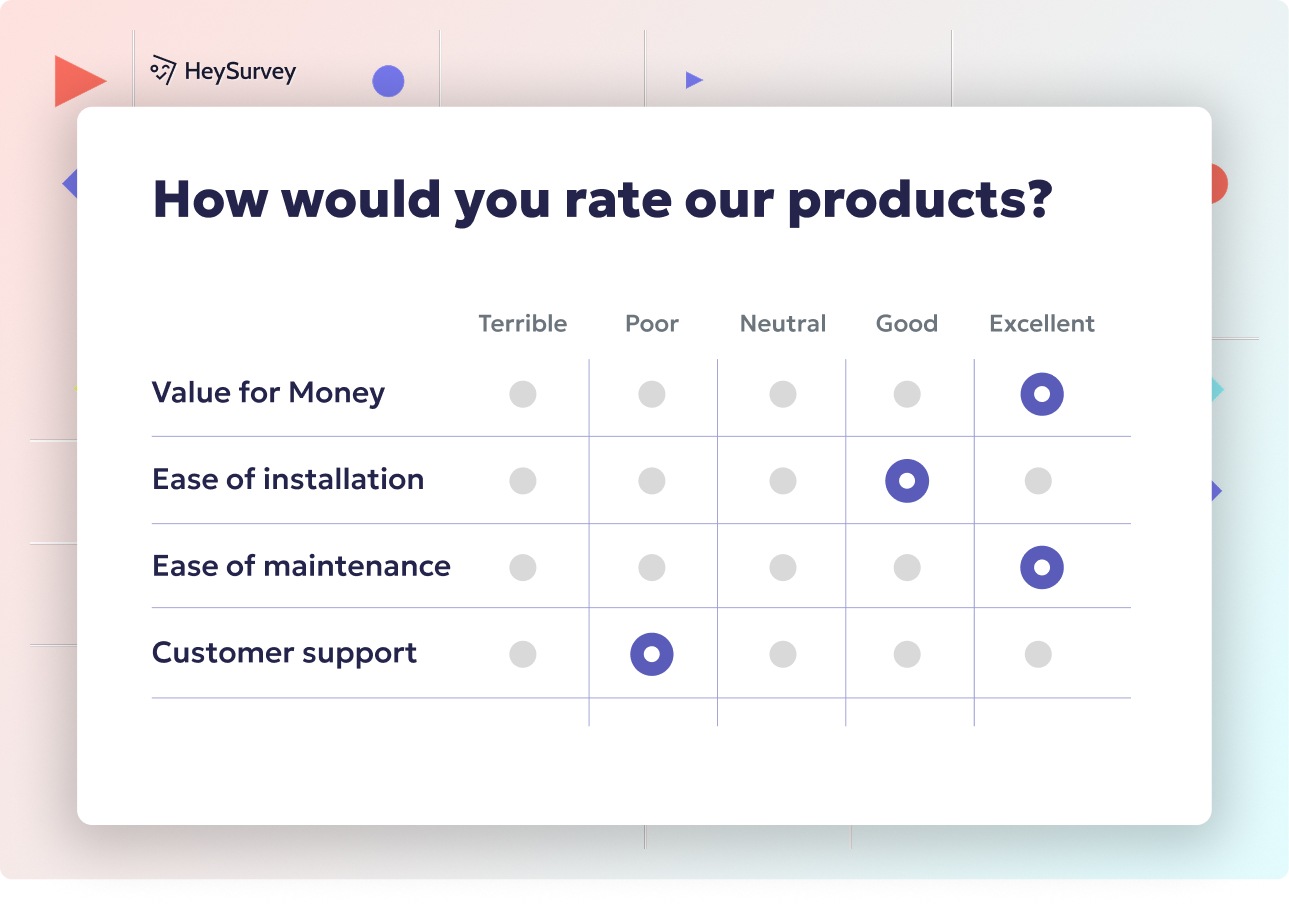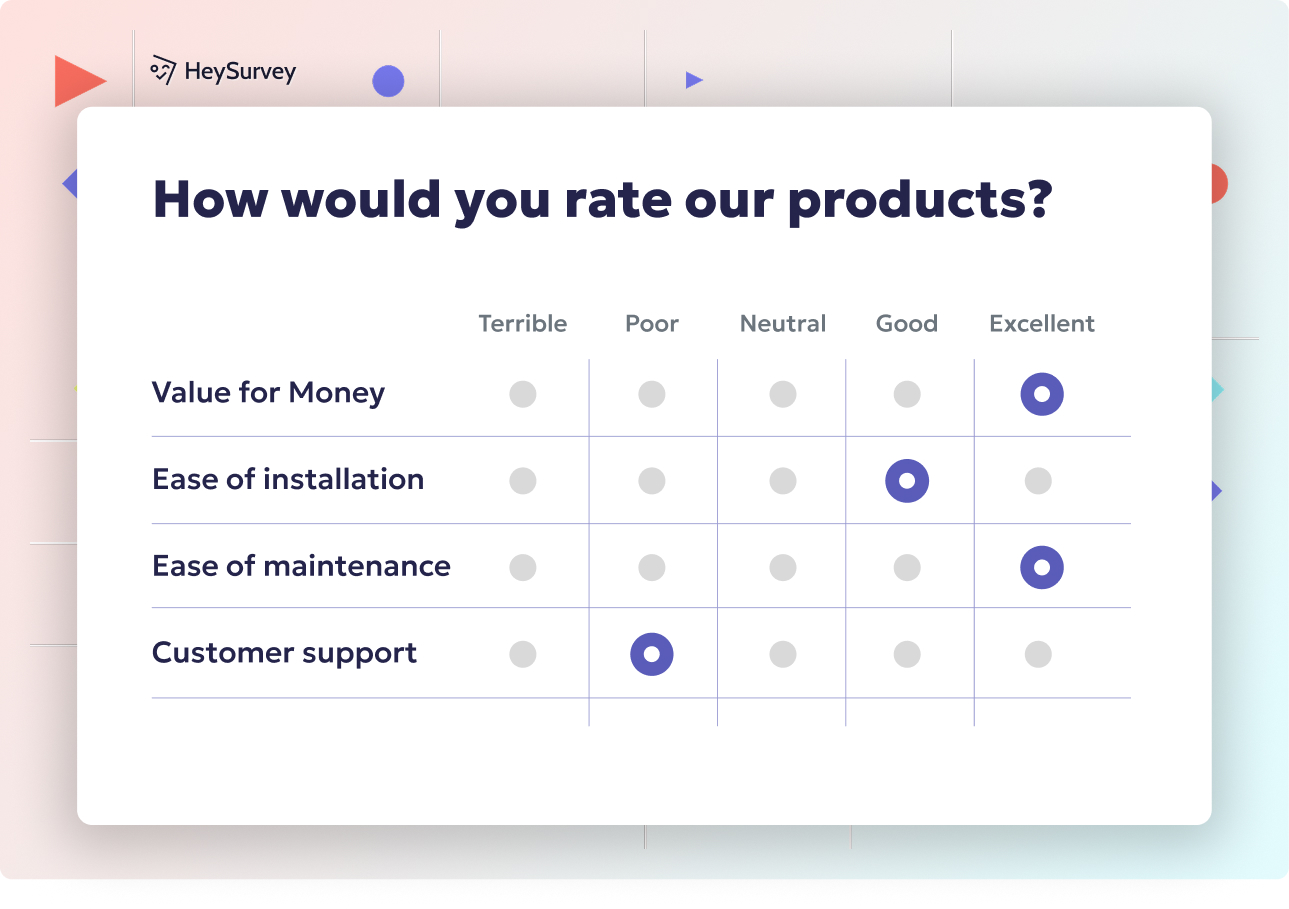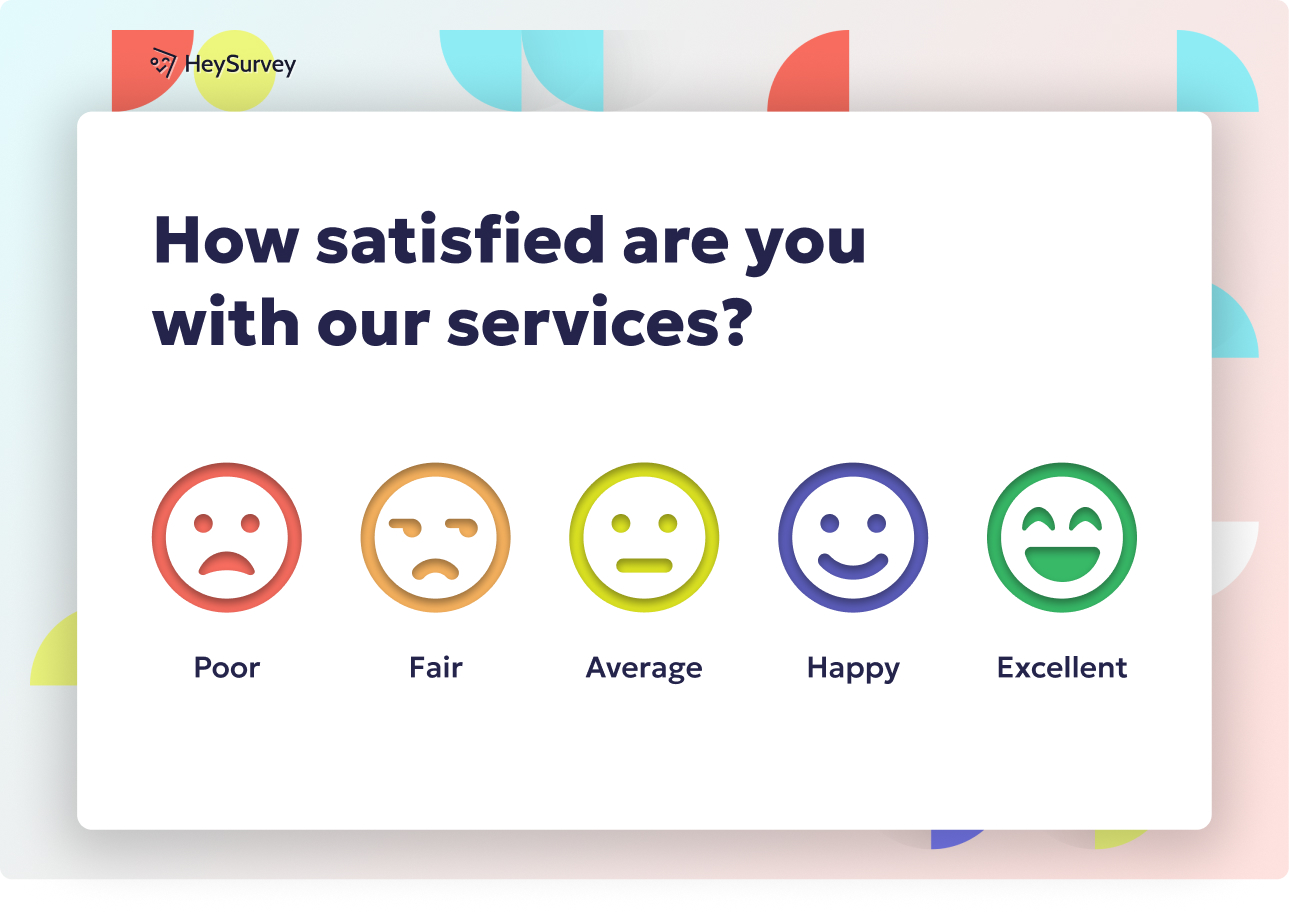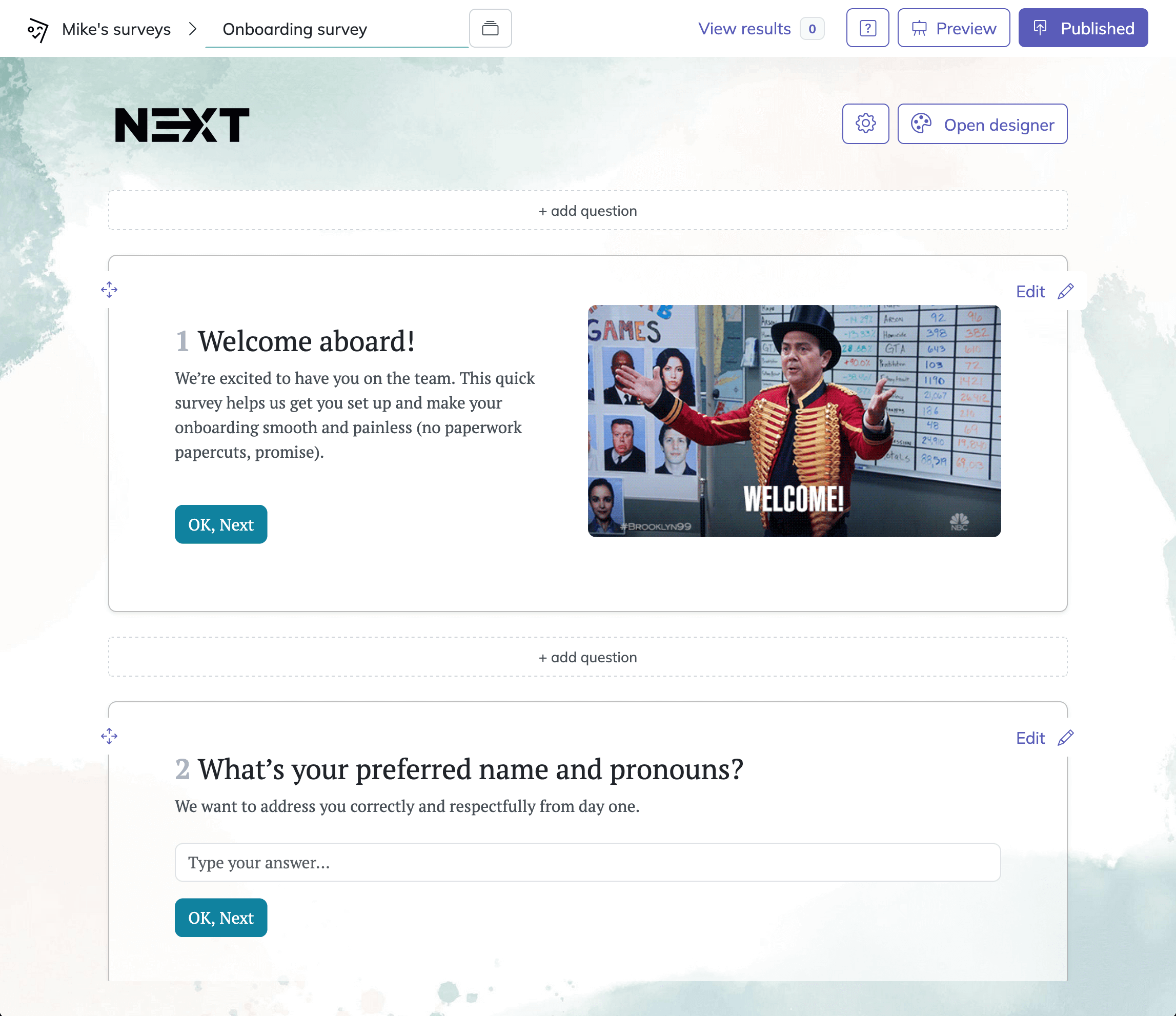31 Stakeholder Survey Questions: The Complete Guide
Discover 28 expert stakeholder survey questions across 8 types to boost engagement, satisfaction, and alignment in your projects.
Stakeholders are the backbone of any project or organization—think of them as the cast of characters cheering (or booing) from the balcony. From internal teams to external partners, their perspectives matter, and the right survey questions can truly transform the game. Targeted stakeholder feedback not only uncovers expectations and boosts engagement—it helps de-risk projects and leads to smarter decisions. This guide dives into eight essential types of stakeholder surveys. For each, you’ll find the survey’s purpose, when it shines brightest, and five ready-to-roll questions.
Engagement & Alignment Surveys
Why & When to Use
Engagement & alignment surveys are all about measuring how invested stakeholders are and if everyone is genuinely on the same page. When you’re at the early phases of a project, just laid out a new annual strategy, or refreshing the vision for your team, these surveys work wonders.
You want to check—are folks excited to join the journey, or are they eye-rolling from the sidelines? These touchpoints are especially useful right after a project kickoff, during annual planning cycles, or anytime strategic objectives get a reboot. Knowing how everyone feels early can help steer the project in a smoother direction with fewer surprises ahead.
Sometimes, teams assume alignment by default. But in reality, miscommunication or silent confusion can creep in, leading to disengagement or missed goals. By using stakeholder alignment questions, you draw out real opinions and uncover any “hidden” gaps in understanding. This clarity helps leadership course-correct quickly, saving everyone from headaches down the road.
Reaching out regularly also prevents stakeholders from feeling left out or voiceless. That engagement is the first step to building lasting, meaningful commitment.
5+ Sample Questions
- How clearly do you understand the project’s intended outcomes?
- How aligned do you feel your personal goals are with those of the project or organization?
- To what extent do you feel your feedback is valued in decision-making?
- How motivated are you to support the project’s objectives?
- What challenges do you foresee in achieving alignment across stakeholders?
- How confident are you that all voices are being heard in strategic discussions?
When thoughtfully designed, the engagement survey for stakeholders is your inside scoop on buy-in, clarity, and group readiness for what’s next. Use these results to fuel stronger plans and more connected teams.
A study evaluating stakeholder engagement in comparative effectiveness research highlighted respect for ideas, consensus-building time, information access, and continuous feedback as key factors for effective engagement. (pmc.ncbi.nlm.nih.gov)

Creating your survey with HeySurvey is a breeze—even if you're just starting out! Follow these three easy steps, and you’ll be collecting stakeholder feedback in no time.
1. Create a New Survey
- Head to HeySurvey and click Create Survey.
- Choose either Empty Sheet to start fresh or pick one of HeySurvey’s handy Pre-built Templates that matches your survey type.
- Give your survey a name to keep things tidy in your dashboard.
Pro tip: If you’re on this page, you might find a handy button below these instructions to open your perfect survey template in a flash!
2. Add Questions
- Click Add Question at the top or between existing questions.
- Pick your question types—text, choice, scale, or others—to suit your feedback needs.
- Enter your questions and tweak settings, like making some questions required to ensure no insights slip through the cracks.
- Use branching if you want the next question to depend on an answer—for example, diving deeper when someone flags a concern.
3. Publish Survey
- Hit the Preview button to see how your survey looks and feels.
- Ready to go? Click Publish—you’ll need an account to do this, but it only takes a minute to set up.
- Grab your shareable link, embed your survey on a website, or email it directly to stakeholders.
Bonus Steps
- Apply Branding: Upload your logo and customize colors and fonts via the Designer Sidebar to make your survey unmistakably yours.
- Define Settings: Set start/end dates, limit responses, or add a redirect URL after completion in the Settings Panel.
- Use Branching: Create personalized survey paths so respondents only see questions relevant to them, making your survey smarter and shorter.
And there you have it—a perfectly tailored stakeholder survey built and launched with HeySurvey!
Satisfaction & Experience Surveys
Why & When to Use
Satisfaction & experience surveys check the pulse of your stakeholders, revealing how happy they are with day-to-day interactions, key services, or the products you provide. Usually, teams send these out after a project goes live, as part of quarterly wellness checks, or during contract renewal windows.
You want to know: are people smiling at your latest update, or secretly grumbling about a buggy platform? Asking the right questions helps identify what’s working and where the cracks are showing. By focusing on touchpoints—like customer service, regular updates, or partner check-ins—you pinpoint exactly where to celebrate or pivot.
These surveys are vital because satisfied stakeholders are far more likely to engage, return, and recommend your organization to others. Discontent is often quietly contagious, but so is delight! By tracking stakeholder satisfaction survey trends, you can uncover improvement areas before they become major issues.
It’s all about creating memorable, positive experiences that keep everyone invested for the long haul.
5+ Sample Questions
- How satisfied are you with the timeliness of our updates?
- How would you rate the quality of our customer support or guidance?
- How easy is it for you to get the information or help you need?
- What aspects of your experience have exceeded expectations?
- Where have we missed the mark or could do better?
- How likely are you to recommend our product/services to others?
Strong experience feedback questions make stakeholders feel seen and heard, and help organizations consistently up their game.
Engaging stakeholders through satisfaction surveys enhances decision-making, strengthens relationships, and improves organizational performance. (vaia.com)
Communication Effectiveness Surveys
Why & When to Use
In every organization, communication survey questions can make or break stakeholder relationships. Clear, timely communication is the magic ingredient. Yet, all too often, messages land with a thud, get lost in translation, or never reach their intended audience.
Use these surveys after you make major announcements, introduce sweeping changes, or simply as a health check after routine updates. Especially during times of crisis, the way you communicate can shape trust for years. By testing which channels resonate and which fizzle, you can adapt quickly to meet stakeholders where they are.
Regular check-ins about communication ensure your updates, reports, and invitations to Zoom marathons are welcomed, not dreaded. Improving stakeholder communications leads to stronger networks and fewer surprises.
Asking for feedback lets people know their voice matters, which strengthens connections or even mends past misunderstandings. Communication, after all, is the lifeblood of every smooth-running venture.
5+ Sample Questions
- Which communication channel do you find most valuable?
- How frequently would you like to receive updates about the project?
- How clear are the messages or reports you’ve received from us?
- To what extent do you feel informed about project progress?
- What topics or details do you wish we shared more often?
- How confident are you that your questions or concerns will receive timely responses?
The right communication survey questions can uncover gold—opportunities to fine-tune your interactions and create stronger partnerships with your stakeholders.
Change Readiness Surveys
Why & When to Use
Nothing throws a team for a loop quite like significant change. Change readiness surveys are your safety net, assessing how open, prepared, and steady stakeholders feel as you roll out new technologies, restructure departments, or introduce sweeping process updates.
You should reach for these surveys before major implementations, midway through rollouts, or when you notice signs of uncertainty (think: hallway murmurs, panicked emails, or frozen productivity). These touchpoints let you spot resistance, surface anxieties, and dial up support before frustration boils over.
Understanding readiness is crucial—forcing change when no one’s on board can derail great ideas. Stakeholder change management questions give you insider knowledge on how people feel about the what, why, and how of change. With this feedback, leaders can better plan training, resources, or timely reassurance.
Proactive surveying gives your stakeholders a sense of agency and empowerment—even when something big is looming.
5+ Sample Questions
- How confident are you that you have the resources to adapt to this change?
- How well do you understand the reasons behind this change?
- What concerns or uncertainties do you have about the upcoming changes?
- To what extent do you feel supported by leadership during this transition?
- How clear is the timeline and next steps for implementation?
- What additional information or tools would help you feel more prepared?
An effective change readiness survey surfaces anxieties early, helping teams steer clear of roadblocks and create a smoother path for everyone.
Effective change readiness surveys should be concise, not exceeding 15 questions, and take no more than 10 to 12 minutes to complete. (knoll.com)
Strategic Prioritization Surveys
Why & When to Use
If you’ve ever wondered which big bets to place, prioritization surveys are your secret weapon. These surveys help you drill down into which initiatives or projects your stakeholders see as most vital—directly impacting budgets, roadmaps, and resource allocations.
Typically, these surveys are used during portfolio planning, when budgeting season is in full swing, or when there’s a need to recalibrate what matters most in a shifting business landscape. Prioritizing without stakeholder input is a bit like throwing darts blindfolded—you may hit the target, but you’ll probably miss some key opportunities.
Stakeholder priority questions make it easy to spot alignment or disagreements on what should come first. By letting people weigh in, you foster buy-in and reduce the risk of wasted time or missed expectations. This open ranking process ensures everyone’s voice is heard before big investments are made.
Knowing your stakeholders’ perspectives on priorities is a compass—it keeps everyone pointed toward shared goals and helps justify tough tradeoffs.
5+ Sample Questions
- Rank the following initiatives based on their strategic importance.
- Which project outcomes do you believe will deliver the most value?
- What is your top concern when choosing between competing initiatives?
- How aligned do you feel the current priorities are with the organization’s mission?
- Which area would you most like to see additional resources or investment?
- Are there any priorities you feel are missing or undervalued?
A strong prioritization survey can make all the difference, guiding teams and organizations to smarter, more stakeholder-aligned decisions.
Partnership & Collaboration Surveys
Why & When to Use
In multi-organization projects, trust and teamwork can either be rocket fuel or a recipe for chaos. Collaboration survey questions get to the heart of how well partners work together, whether everyone feels valued, and if the benefits are flowing in both directions.
The best time to use these surveys is at mid-contract reviews, when a new joint venture is kicking off, or ahead of renewing key partnerships. At these checkpoints, teams can assess what’s working now, what needs a refresh, and nip issues in the bud before they grow.
Partner feedback survey items focus on transparency, respect, shared decision-making, and perceived value. By collecting honest feedback, you create space for new innovations, patch up misalignments, and develop deeper trust among collaborators.
Strong partnerships require ongoing nurture—so checking in regularly will keep your organization and your partners thriving.
5+ Sample Questions
- To what extent do you feel your contributions are valued by other partners?
- How transparent is the decision-making process within the partnership?
- How well do partners share information and resources?
- What additional support would help strengthen our partnership?
- How much trust do you have in the other organizations involved?
- Where do you see opportunities for greater collaboration or joint success?
With effective collaboration survey questions, you foster thriving partnerships and unlock the full potential of teamwork, even across company lines.
Post-Project Evaluation Surveys
Why & When to Use
When a project finishes, the temptation is to bask in the glory (or sneak off for a well-earned nap). But pausing to run a project evaluation survey can turn every project into a launching pad for even greater success next time. These surveys gather lessons learned, perceptions of value, and suggestions for improvement.
You should launch these as soon as a project wraps up or at key milestones—while memories are fresh and actionable insights can still make a difference. Feedback from these moments helps teams iterate their practices and improve future outcomes.
Post-project stakeholder questions reveal what delighted your stakeholders and what drove them nuts. This honest review is critical for organizations aiming to continuously grow, adapt, and deliver greater impact.
Closing the feedback loop after a project builds trust, shows respect for everyone’s contribution, and sets a positive tone for future collaboration.
5+ Sample Questions
- What aspect of the project added the most value to your organization?
- Which areas could have been managed more effectively?
- How satisfied are you with the final outcome of the project?
- What challenges did you experience during the project?
- How well did the project meet your expectations?
- What advice would you give to improve future projects?
Using solid post-project stakeholder questions helps every project deliver more value, creating a cycle of learning and continuous improvement.
Stakeholder Survey Dos and Don’ts (Best Practices)
To get the most out of stakeholder questionnaires, you’ll want to balance curiosity with respect—a little structure goes a long way. Follow these best practices for stellar stakeholder survey results:
- Keep your survey short and focused. If it takes longer than a coffee break, you risk half-hearted responses.
- Protect respondent anonymity when possible. People share more honestly if they aren’t worried their boss is reading over their shoulder.
- Always follow up once the survey closes. Share results, set next steps, and thank everyone who participated.
- Close the feedback loop by showing how suggestions informed real changes (or explaining why not).
- Mix question formats—combine multiple choice, scales, and open-ended prompts for richer feedback.
- Pilot your questions on a small group first to catch confusing language or missing options.
Avoid these classic pitfalls:
- Don’t use leading or biased questions; genuine feedback needs space to breathe.
- Don’t overwhelm with too many surveys—survey fatigue is real, and people will tune out if you ask every month.
- Never ignore the feedback. There’s nothing worse than being asked for your opinion and seeing it disappear into the void.
- Don’t disregard timing. Dropping a survey during a major deadline or at holiday season can doom response rates.
Solid stakeholder survey best practices keep your efforts effective—and stakeholders feeling appreciated, not interrogated!
Conclusion
Surveying stakeholders isn’t just checking a box—it’s the smart way to create better alignment, happier teams, and bolder results. With these eight survey types and deft questions, you can easily tap into authentic feedback and steer projects in the right direction. Remember, a playful mindset and genuine curiosity go a long way. Happy surveying!
Related Feedback Survey Surveys

25 Catering Survey Questions to Collect Actionable Feedback
Discover 30 expert catering survey questions to gather actionable feedback that enhances menus, s...

30 User Feedback Survey Questions for Better Insights
Discover 40+ user feedback survey questions across 8 types to boost product insights, UX, and cus...

30+ Environment Survey Questions for Sustainable Insights
Explore 30+ environment survey questions with expert tips covering awareness, behavior, corporate...
